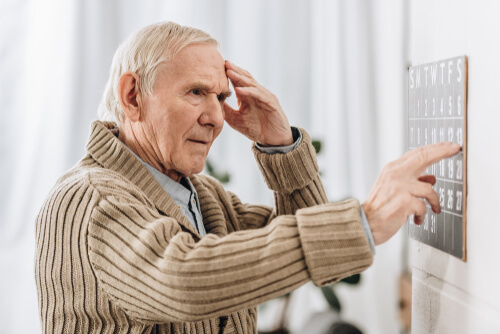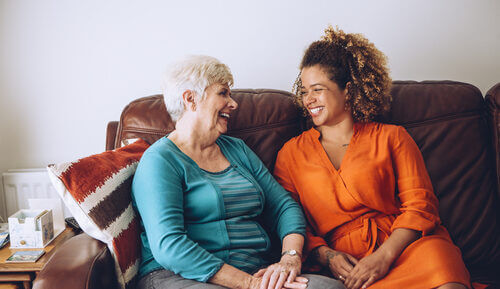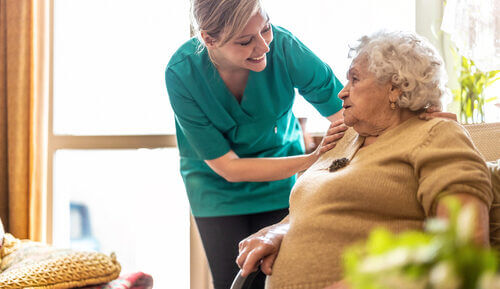
Page contents
- Give each room better lighting to help you see clearly
- Keep your home tidy and remove clutter
- Remove trip hazards to make sure floors are safe
- Use contrasting colours with minimal patterns
- Use signs and labels to remind you where things are and things to do
- Make the bathroom safe and easy to use
- Make frequently used items in the kitchen visible
- Remove or cover mirrors and reduce reflections
- Make the bedroom a safe and comfortable space
- Use products designed for people living with dementia
Page contents
- Give each room better lighting to help you see clearly
- Keep your home tidy and remove clutter
- Remove trip hazards to make sure floors are safe
- Use contrasting colours with minimal patterns
- Use signs and labels to remind you where things are and things to do
- Make the bathroom safe and easy to use
- Make frequently used items in the kitchen visible
- Remove or cover mirrors and reduce reflections
- Make the bedroom a safe and comfortable space
- Use products designed for people living with dementia
Dementia can cause confusion and anxiety so making the home dementia-friendly will make the environment safer, less confusing and adapted to suit the needs of someone with dementia.
Although dementia is a progressive condition, with the proper support a person living with dementia can often continue to live safely at home for many years. In fact, 60 per cent of people receiving home care services have dementia.
You can make your home dementia-friendly by making small adaptations at home to make it easier for someone with dementia to navigate around the home and continue carrying out their daily tasks.
Making these adaptations to your home environment will help you to stay as independent as possible and create a safer environment if you have trouble remembering where things are and how they work.
Here are 10 simple dementia-friendly home ideas that will hopefully make life a little bit easier
Give each room better lighting to help you see clearly
Light is incredibly important for someone living with dementia. Good lighting can help you avoid confusion, reduce risk of falls, make orientation easier and benefit your overall wellbeing.
Make sure as much natural light as possible can get into your home.
You can do this by:
- Removing unnecessary curtains and blinds so windows can let in daylight.
- Using curtains that are made of light fabric and are light in colour to reflect natural light during the day.
- Using higher watt light bulbs, especially if the house is particularly dark even during the day.
As well as improving natural light during the day, it’s also beneficial to use light to mark the end of the day as many people with dementia have difficulty knowing when it is time for bed. In the bedroom for example, a great way to help you sleep better is to use heavier curtains or black out blinds which make the room darker and signals that it is time for bed, no matter the time of year.
Keep your home tidy and remove clutter
Keeping our house neat and tidy is a battle many of us face, and it can often be the first thing that slips when we have other things going on. However, if you are living with dementia, an untidy home can make it difficult for you to find or see the things you need and can also make you feel confused and distracted.
The tidier the room, the more focus you can put on the items that you actually use because they will be easier to spot.
Putting away or getting rid of things that are not frequently used is a good way to keep rooms clutter-free.
Remove trip hazards to make sure floors are safe
Disorientation and poor coordination are common symptoms associated with dementia, increasing a person’s risk of slips or trips.
Removing potential trip hazards around your home is essential for your safety and will allow you to move around the house freely without worrying about potential incidents.
In addition to good lighting to help you see better, removing rugs, mats, cables and anything else that is a potential trip hazard will help you to maintain clear floor space.
Use contrasting colours with minimal patterns
Dementia can affect your ability to tell the difference between colours, so it is important to make it as easy as possible to identify walls, floors, furniture and other things around the house.
Here are some tips to make the home more dementia-friendly:
- Choose furniture and furnishings, such as tables, chairs and beds, with bright, bold colours.
- Make use of contrasting colours to help you find things more easily, so for example, having a toilet seat that is a different colour to the rest of the bathroom is a good idea as well as using contrasting crockery.
- Similarly to above, try to make sure floors are a different colour to the walls to avoid confusion.
- Avoid patterns like stripes as they can be confusing or cause disorientation.
Use signs and labels to remind you where things are and things to do
As dementia progresses, your ability to remember where things are or things that should be done may decline.
Labels and signs around the house can help you to find things easier, such as the bathroom, as well as helping you to organise your daily routine. Signs should ideally have a picture along with clear wording to make them easy to understand.
Labelling doors, drawers and cupboards shows what’s behind or inside them. An alternative to labelling could be to get see-through cupboard doors, but this will come at an extra cost.
Another good tip is to keep keys, mobile phones and wallets in the same place.
You might also consider putting a calendar up to remember important dates and times, such as when to take medication or any plans you have that week.
Make the bathroom safe and easy to use
There are many different ways to make a bathroom safe and dementia-friendly to use for someone living with the disease. For example:
- Put a picture or a sign on the bathroom door to make it easily recognisable and avoid bathmats as they can appear to be barriers.
- If towels, the toilet seat, toilet paper, toiletries and other things have contrasting colours to the rest of the room, they will be much easier to recognise.
- Consider leaving the light on at night to make it easier to find in the dark.
- Clearly labelling the taps with hot and cold is also helpful and a flood prevention plug in the bathtub can save you from water flowing over the edges.
Make frequently used items in the kitchen visible
The kitchen can be a confusing place for a person living with dementia, particularly as most utensils are stored away and hidden from plain sight.
As was mentioned previously, putting labels on cupboards and drawers makes it clearer where things are.
Some additional things you can do include:
- Remove clutter to help to avoid confusion.
- Store away potentially harmful substances like cleaning products.
- Remove artificial fruit.
- Keep pet food separate.
- Use plain coloured plates to make food stand out.
- Try to use clear containers when storing meals for later.
- Choose crockery with contrasting colours to tables and tablecloths.
Bear in mind that dementia can affect your ability to grip and use items such as forks and knives. If you start to struggle with this, it may be a good idea to get adaptive utensils.
Remove or cover mirrors and reduce reflections
Mirrors and reflections can cause distress as people with dementia may not recognise themselves. This can be because they have reverted back to a certain point in their life and believe they are younger, for example, or they may see themselves as a stranger, both of which can be a frightening experience.
Wherever possible, either cover or remove mirrors and close the curtains in the evening to avoid reflection in windows. This will help to make the home more dementia-friendly.
Make the bedroom a safe and comfortable space
For many people, bedrooms are a sanctuary, a place where they feel safe and comfortable, and this should be no different if you or a loved one are living with dementia.
To ensure your bedroom remains a safe space and is dementia-friendly, consider changes such as:
- Making the bed easier to see, for example, choose linen and bedding with contrasting colours to the rest of the room.
- Choosing clothes beforehand. Facing a wardrobe full of clothes can be overwhelming but selecting what to wear the night before or in the morning can make it easier and more appealing to get dressed.
- Use a night light by the bed to help with orientation if you wake up in the middle of the night. This can also help guide you back to bed after a visit to the toilet.
- As mentioned previously, use heavier curtains to make the room darker at night and help with sleeping.
Use products designed for people living with dementia
There are a range of products that have been specifically designed to help everyday life for people living with dementia, this is also known as assistive technology.
Examples include:
- A digital clock with a large display showing both date and time
- A phone with large buttons
- Devices giving audio prompts to help you remember things
- Sensor lights
- Crockery and utensils


